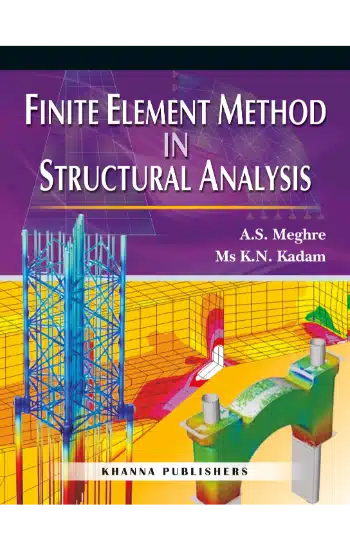
Save: 10%

Save: 1%
Finite Element Method in Structural Analysis
Publisher:
| Author:
| Language:
| Format:
Publisher:
Author:
Language:
Format:
₹349 ₹314
Save: 10%
In stock
Ships within:
In stock
ISBN:
Page Extent:
Finite element method started flourishing from 1960 or so. Since then, the method has acquired immense popularity and has found applications in various fields of engineering. Presently, the method has emerged as a powerful tool of analysis. This is because of various advantage associated with it. The method is versatile and can analyse any arbitrarily shaped structure having any combinations of boundary conditions and subjected to different types of loads. It can be used for static linear, non-linear and dynamic analysis. The method is applicable to solve problems in various fields of engineering. However, this book limits the presentation to structural engineering problems. There are two different views of looking at the finite element method. Mathematicians treat it as a method of solving differential equation. Another view, by engineers, is to treat it as a means of obtaining deformed state of structure using minimum potential energy principle.
Finite element method started flourishing from 1960 or so. Since then, the method has acquired immense popularity and has found applications in various fields of engineering. Presently, the method has emerged as a powerful tool of analysis. This is because of various advantage associated with it. The method is versatile and can analyse any arbitrarily shaped structure having any combinations of boundary conditions and subjected to different types of loads. It can be used for static linear, non-linear and dynamic analysis. The method is applicable to solve problems in various fields of engineering. However, this book limits the presentation to structural engineering problems. There are two different views of looking at the finite element method. Mathematicians treat it as a method of solving differential equation. Another view, by engineers, is to treat it as a means of obtaining deformed state of structure using minimum potential energy principle.
About Author
Reviews
There are no reviews yet.
Related products
RELATED PRODUCTS
Science For Class 10 : Set Of 3 Books
Save: 40%
Digital Communication Fundamentals And Applications (2nd Ed)
Save: 60%
Distributed Operating Systems Concept And Design (2004)
Save: 60%
Oracle Database 11G The Complete Reference (India Edition 13th 2014)
Save: 50%
Software Engineering A Practitioner’s Approach (7th Ed)
Save: 60%
Together With Computer Science ( C + + ) Class 12th (1st Ed)
Save: 60%



Reviews
There are no reviews yet.